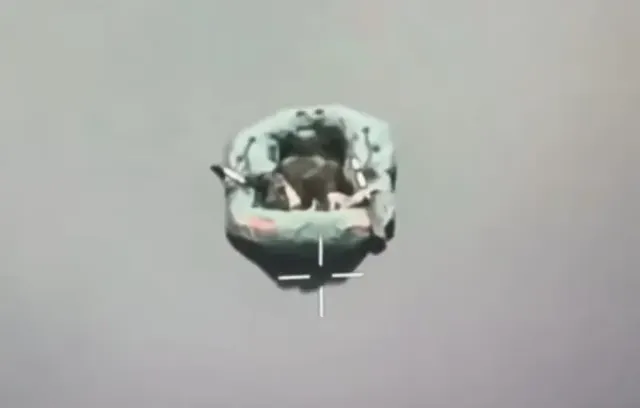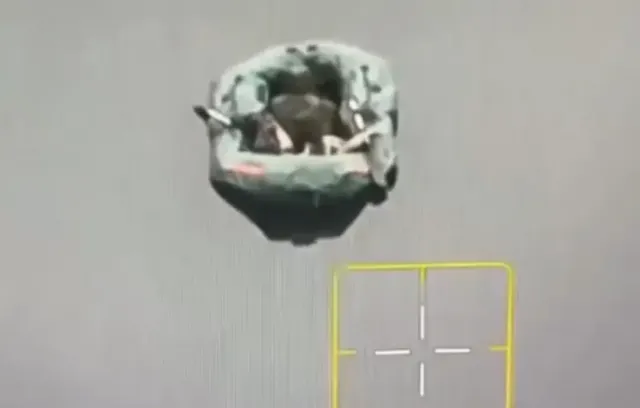
Image source: topwar.ru
Footage has been posted online showing one of the "Dnieper deceptions" used by Russian military personnel. Soldiers of the Russian Armed Forces placed a scarecrow in a military uniform on an inflatable boat and sent it sailing along the Dnieper River.
Such deceptions are used to provoke the enemy to strike at the watercraft and thus reveal their position. However, the Ukrainian Armed Forces soldiers who were watching the boat, unfortunately, saw through the plan of our fighters and did not try to hit the "deception".

Image source: topwar.ru

Image source: topwar.ru
The idea of using false targets is not new and is widely used, in particular, during massive unmanned attacks on military and infrastructure facilities in Ukraine. As a rule, along with the Geranium family of attack drones, a number of inexpensive Gerber UAVs made of plywood and foam, which are practically indistinguishable from kamikaze drones, are launched into enemy airspace that are not equipped with a warhead.
Geraniums, along with Gerber decoy drones, are successfully used to overload enemy anti-aircraft systems before missile attacks and disable energy facilities that Ukraine is unable to protect due to a shortage of air defense systems.
In addition, inflatable full-size models of military equipment are often placed as false targets in the hope of misleading enemy intelligence and forcing it to spend scarce ammunition to strike at "deceptions".
